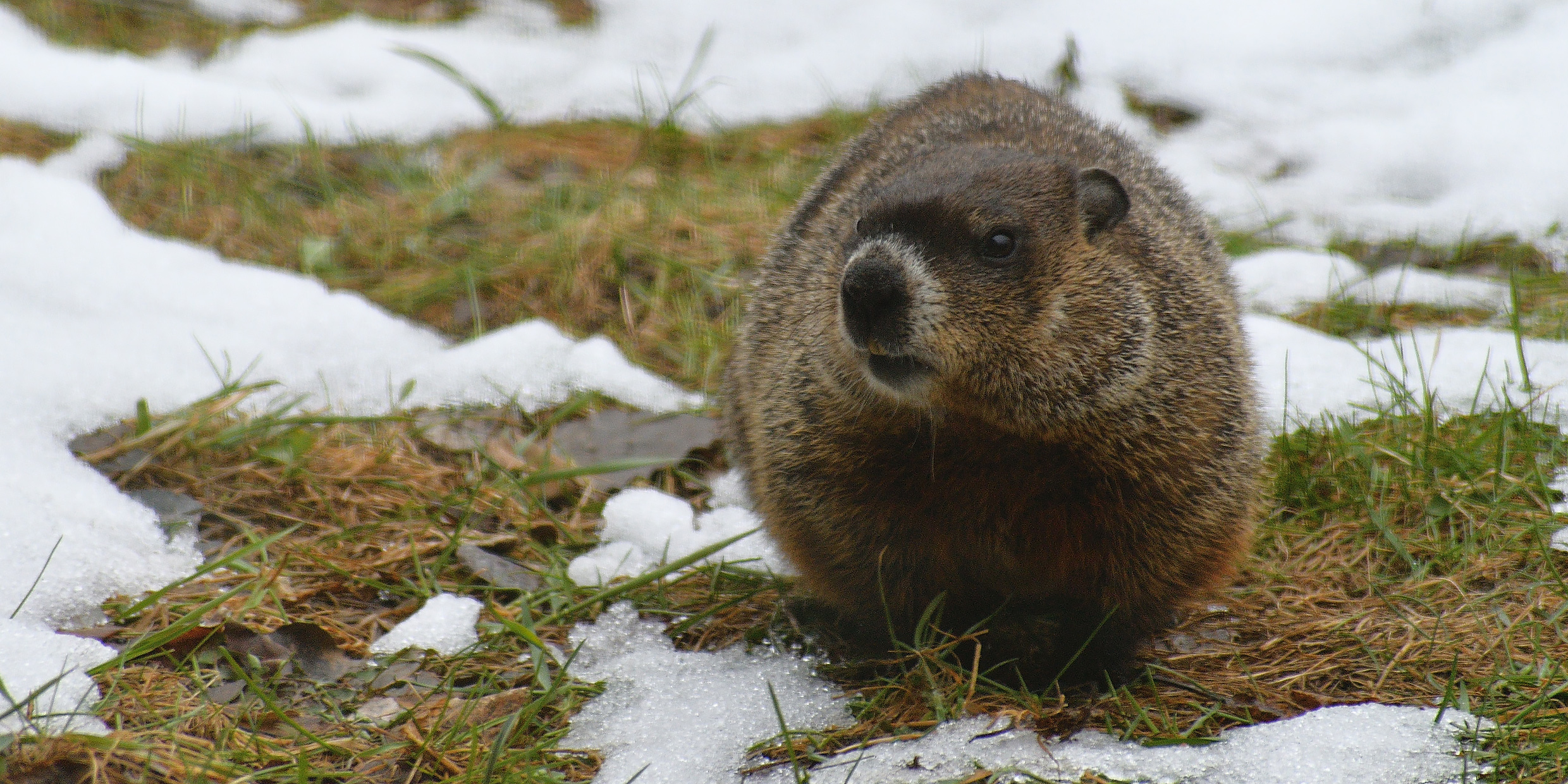Originally published 3 February 1997
Elsewhere in the news this morning you will read or hear about Punxsutawney Phil, the famous Pennsylvania groundhog that did or did not see its shadow when it emerged from its burrow yesterday. If he did, we are in for six more weeks of winter. If it didn’t, we can put away the parkas and welcome spring.
What you probably won’t read about are Punxsutawney Phil’s astronomical connections. The fat woodchuck is part of a web of solar lore with roots in prehistory. In fact, Phil presides at the year’s first “cross quarter” day. The fuss that attends his emergence from his burrow is connected to the sun by more than a shadow.
The story begins 4½ billion years ago in the chaos of the pre- solar nebula from which the solar system was born.
In a corner of the Milky Way Galaxy, a vast cloud of dust and gas began to contract under the influence of gravity. As the cloud got smaller, it spun faster, as an ice skater spins faster as he draws his arms close to his body. As the cloud spun faster, it flattened out, like a mass of spinning pizza dough.
This whirling pancake of dust and gas became our solar system. Most of the material was pulled to the center to form the sun. Other whirling eddies within the cloud were collected by gravity to become planets. There was considerable chaos within the cloud. When the third planet from the sun settled into place, its spin axis had a tilt of 23½ degrees to the plane of the pancake.
It was the luck of the draw. It might have been 30 degrees. It might have been zero.
If it were zero, no Punxsutawney Phil.
Because of the tilt, as the Earth orbits the sun, sometimes the northern hemisphere is tipped towards the sun, sometimes away. In the first instance, the sun’s rays fall more directly upon the surface and heat it efficiently: summer. In the latter case, the sun’s rays shine obliquely and spread their energy inefficiently: winter.
If there had been no tilt, there would be no seasons. Climate, yes — poles cold and equator hot — but no seasonal variation. In temperate mid-northern latitudes, where many of our cultural traditions had their origin, the weather would have been springlike or autumn-like all year long.
But there was a tilt, and the waxing and waning of the sun’s warmth and light was the central fact of life for peoples living away from the tropics. Our ancestors were first and foremost sun worshipers.
The great festivals of the year were celebrated on those days when the sun stood highest or lowest in the sky. The bonfires of St. John’s Eve, June 23rd, which are still lit in some parts of Europe, celebrate the sun’s ascension to its highest point in northern skies.
Likewise, the winter solstice, when the sun stood lowest, was marked with feasts of light to ensure the sun’s return. These ancient rites linger in the Christian feast of Christmas and the Jewish Hanukkah.
The equinoxes, when the sun is halfway between its extremes of strength and weakness, were celebrated too. The spring equinox retains a place in our calendar through its connection with the Christian feast of Easter, or alternately, as the Ides of March or St. Patrick’s Day. Celebrations of the fall equinox have slipped from prominence.
The cross-quarter days, midway between the solstices and equinoxes, are less familiar, but they too figured in ancient rites, and also lurk in our traditions.
The first cross-quarter day should mathematically fall about Feb. 4th or 5th. This became Candlemas Day, Feb. 2nd, in the Christian calendar. An old European rhyme asserts:
"If Candlemas be fair and bright, Come winter, have another flight. If Candlemas brings clouds and rain, Go, winter, and come not again."
Some Europeans looked for the shadow of the hedgehog on Candlemas.
German immigrants brought the tradition to Pennsylvania, and apparently substituted the American woodchuck for the hedgehog. If so, there is a nice incorporation into European custom of Wojak, “grandfather” beast of the Algonquin Indians and forebear of the original humans, from whence derives our “woodchuck.”
We celebrate the second cross-quarter day as May Day. The third cross-quarter day, which falls on or about Aug. 7th, was perhaps remembered in the Christian calendar as Lammas, or “loaf-mass,” a harvest feast, but it has vanished from our attention. The fourth cross-quarter day remains prominently with us as Halloween.
Punxsutawney Phil bears a weight of tradition on his fat, furry shoulders. His contrived appearance may seem inconsequential, a bit of local fun and self-promotion for the folks of Punxsutawney, but it is good that the old traditions live on in secular form to remind us of our common humanity on the tilted third planet from the sun.
Now, if only some enterprising municipality would invent or revive a tradition for the unmarked third cross-quarter day, perhaps involving loaves of bread.



